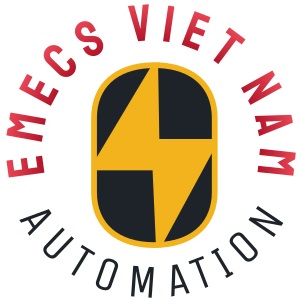Mô đun ALLEN BRADLEY 2.5A 5VDC 1785-LT B PROGRAMMABLE PROCESSOR CONTROLLER MODULE NEW
ALLEN BRADLEY 2.5A 5VDC 1785-LT B PROGRAMMABLE PROCESSOR CONTROLLER MODULE NEW
About 1785-LT2
The AB 1785-LT2 module has 512 I/O. The maximum user memory words of this module are 13K expandable to 17K or 21K. The 1785-LT2 is intended for operation in the pollution level industry environment 2, in category II applications (as defined in the publication of IEC 60664-1). This module can operate at an altitude of up to 2000 meters without derating. If you connect or disconnect the cable and the terminal block or if you insert or discharge the module when the power is on, an electrical arc may occur. This may cause an explosion if the 1785-LT2 is installed in a hazardous location. Make sure the power is switched off and that the area is not hazardous before disconnecting the module.
The 1785-LT2’s operating temperature is 0-60 °C (32-140 °F). The storage temperature is -40-85 °C (-40-185 °F). The relative humidity of this module is from 5-95% without condensation. The AB 1785-LT2 has an operating shock of 30 g (3 pulses, 11 ms). The nonoperating shock is 50 g (3 pulses, 11 ms). Separate this module from other equipment and crop walls to allow convection cooling. Convection cooling pulls the air in a vertical column to the top of the processor, cooling it down. This cooling air shall not exceed 60 ° C (140 ° F) at any point immediately below the processor. If the air temperature exceeds 60 ° C, install the fan carrying filtered air or recirculate the internal air inside the enclosure, or install the air/heat exchanger unit
OTHER SUPERIOR PRODUCTS
| Yasakawa Motor, Driver SG- | Mitsubishi Motor HC-,HA- |
| Westinghouse Modules 1C-,5X- | Emerson VE-,KJ- |
| Honeywell TC-,TK- | GE Modules IC – |
| Fanuc motor A0- | Yokogawa transmitter EJA- |
|
1785-L11B |
The AB PLC-5 processors have ports configurable for either a Data Highway Plus messaging communication link or a Universal Remote I/O link. As a Universal Remote I/O port, it can be configured as either an I/O scanner port or an I/O adapter port. As an I/O scanner port, it monitors and controls the I/O on the link by communicating with the I/O adapters for those I/O. As an adapter port, it communicates only with the I/O scanner port on the link, passing a maximum of one I/O rack of input and output data between the two to provide distributed processing.
The scanner-mode PLC-5 controller can:- gather data from node adapter devices in remote I/O racks – process I/O data from 8-, 16-, or 32-point I/O modules- address I/O in 2-, 1-, or 1/2-slot I/O groups- support a complementary I/O configuration – support block-transfer in any I/O chassis – ladder logic program using a language that is representative of relay logic.- performing diagnostics- programming discrete control
Use the 1785 for subroutines for storing recurring sections of program logic that can be accessed from multiple program files. A subroutine saves memory because you program repetitive logic only once. The JSR instruction directs the controller to go to a separate subroutine file within the logic controller, scan that subroutine file once, and return to the point of departure.
Main Control Programs (MCPs)
Separate sequential logic from ladder logic and structured text as a way of modularized your process and making troubleshooting easier. Use several main control programs (MCPs) to define one main control program for each particular machine or function of your process. MCPs accommodate independent or non-sequential activities


